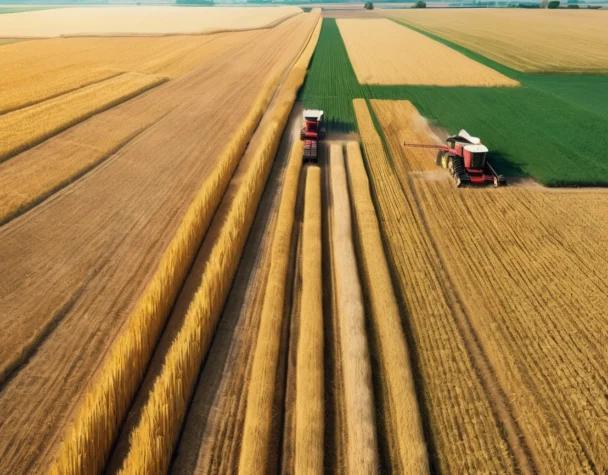
Top Agriculture Commodities to Watch in Q1 Y2025
Thu, March 06, 2025As we usher in the first quarter of 2025, the agriculture sector continues to evolve under the influence of global economic dynamics, technological advancements, and climate change. This year, certain agricultural commodities stand out not only for their economic potential but also for their impact on both markets and sustainability practices. Identifying these ‘rising stars’ and keeping an eye on key commodities is essential for stakeholders across the agricultural spectrum, from farmers to investors and policymakers.
2025’s Rising Stars in Agriculture
The agricultural landscape in 2025 is shaped by both innovation and necessity. One of the standout stars this year is quinoa, which is seeing a surge in demand due to its high nutritional value and adaptability to various climate conditions. As the world becomes more health-conscious, quinoa’s profile is elevated from a niche health food to a mainstream staple. Similarly, bamboo is making headlines not just for its uses in sustainable building and manufacturing but also for its potential in sequestering carbon, making it a dual-purpose commodity that appeals to both environmental and economic interests.
Another notable mention is the resurgence of sorghum. Once considered a secondary crop, sorghum is now valued for its drought resistance and versatility, fitting perfectly into the narrative of sustainability and climate resilience. This crop is being increasingly utilized in biofuel production, gluten-free products, and animal feed, showcasing its diverse applications. Furthermore, vertical farming technology is propelling lesser-known leafy greens into the spotlight. These crops, grown in controlled environments, are becoming popular for their minimal land use and reduced water consumption, aligning with urbanization trends and the push towards more sustainable agricultural practices.
The investment in agricultural technology, particularly in the areas of crop monitoring and disease prediction, is also fostering growth in traditional commodities such as wheat and soybeans. Enhanced by AI and machine learning, these commodities are seeing increased yields and reduced waste, ensuring their place as top contenders in the agricultural market.
Q1 Watchlist: Key Commodities to Track
Heading into the first quarter of 2025, it’s crucial to keep an eye on several key commodities that are expected to make significant moves. Coffee, for instance, remains a commodity to watch closely due to fluctuating prices driven by changing climate patterns and growing consumption in emerging markets. Innovations in sustainable cultivation and fair-trade practices are likely to influence its market dynamics significantly.
Cotton is another commodity on the watchlist, as the fashion industry continues to recover and reinvent itself post-pandemic. The increasing demand for organic and sustainable textiles is pushing cotton prices up, making it a critical commodity for economic and environmental observers. Additionally, the volatility in the crude oil market continues to indirectly impact agricultural commodities, including biofuel sources like corn and sugarcane. These commodities are likely to experience price changes as countries navigate energy transitions and green policies.
Lastly, the livestock sector, particularly poultry and pork, should be monitored as changes in feed prices and international trade agreements play out. The ongoing recovery from various global supply chain disruptions has led to fluctuations in meat prices, affecting both producers and consumers. Tracking these commodities provides insights into broader economic health and consumer trends as we move deeper into 2025.
As we delve into the first quarter of 2025, the agricultural sector presents both challenges and opportunities. By focusing on rising stars like quinoa, bamboo, and sorghum, and keeping a vigilant eye on key commodities such as coffee, cotton, and livestock, stakeholders can navigate the complexities of the market with greater insight and foresight. Understanding these dynamics will not only be crucial for economic success but also for advancing sustainable and resilient agricultural practices worldwide.

